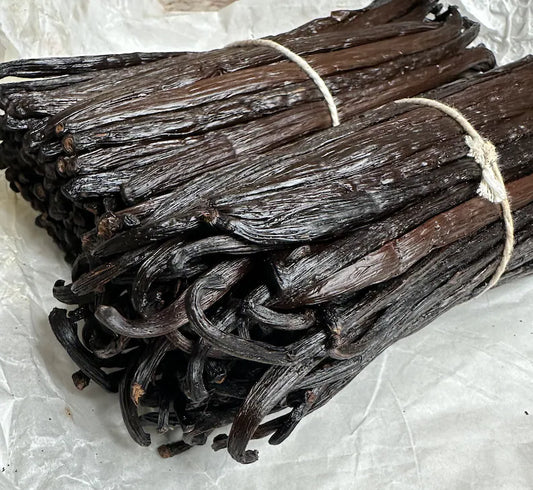The Captivating Journey from Orchid Origins to Kitchen Staple
Vanilla beans possess an almost magical essence with their sweet, floral fragrance and smooth, spicy flavor. But few people realize the intricate origins of these captivating pods. Where do they grow? How are they cultivated and cured? Let's unravel the spellbinding story behind vanilla beans and their journey from orchid flowers to flavoring millions of desserts and drinks across the globe. Understanding the careful processes needed to produce these pods will make you appreciate each bean even more.
Native Regions
Vanilla beans grow on lush, vining orchids that originate from the tropical forests of Veracruz, Mexico. Local Totonac people first cultivated vanilla for the Aztec empire to flavor cacao drinks. Later, vanilla was introduced to other humid, equatorial regions mimicking its native habitat. Today, prime vanilla production occurs in:
Madagascar: The world's largest producer, known for premium Bourbon vanilla with deep, rich notes. Madagascar sets the standard, providing 80% of gourmet beans.
Indonesia: Grows Indonesian vanilla celebrated for its intense, smoky quality from the islands of Java, Sumatra and Sulawesi.
Uganda: Africa’s foremost vanilla exporter, especially in quality organic beans with sweet hints of chai spice.
Tahiti: Cultivates beautifully perfumed vanilla from lush Polynesian islands.
Soil and Climate Needs For successful cultivation, vanilla orchids require
- Temperatures around 80°F to stimulate rapid vine growth
- Tropical humidity and rainfall for vigorous blooms
- Fertile, volcanic soil to supply nutrients
- Filtered light and tree trunks to climb for delicate leaves
Additionally, vanilla benefits from seasonal tropical storms which help disperse pollen for fruit set. Diversity in regional conditions leads to varying flavor profiles.
Pollination Process
Unlike most plants, vanilla flowers last just one day and cannot self-pollinate, requiring manual assistance. Skilled workers hand-pollinate unopened flowers using these traditional steps:
- Early morning when blossoms open
- Lift the flap-like rostellum covering reproductive parts
- Press pollen-covered anther to stigma below rostellum
- Rub pollen over stigma surface to fertilize
- Blossoms fade by mid-day
Meticulous hand-pollination allows beans to develop inside vanilla pods over ensuing months.
Curing Technique
Once harvested, thousands of chemical changes occur during slow curing to develop vanilla’s signature aroma and taste. Curing takes 4-6 months and involves:
- Wilting pods in hot sun daily to activate enzymes
- Sweating for active fermentation to break down acids
- Conditioning for several months wrapped in blankets to distribute vanillin
- Drying to end fermentation and lock in flavor
- Grading pods based on pliability, shine, length and bean count
- Proper curing technique requires extensive farmer knowledge which large producers have perfected over generations.
Finding Quality Beans Seeking ultra-fresh, gourmet beans? Check specialty spice shops or gourmet grocers where you can inspect beans firsthand. Online fair-trade retailers offer global vanilla diversity from sustainable farms as well. Prime beans have an oily sheen, robust aroma, tiny seeds inside and supple texture showing true quality.
So next time you enjoy velvety vanilla ice cream or fragrant vanilla sugar cookies, you can appreciate the intricate origins of one of the world’s favorite flavors!


